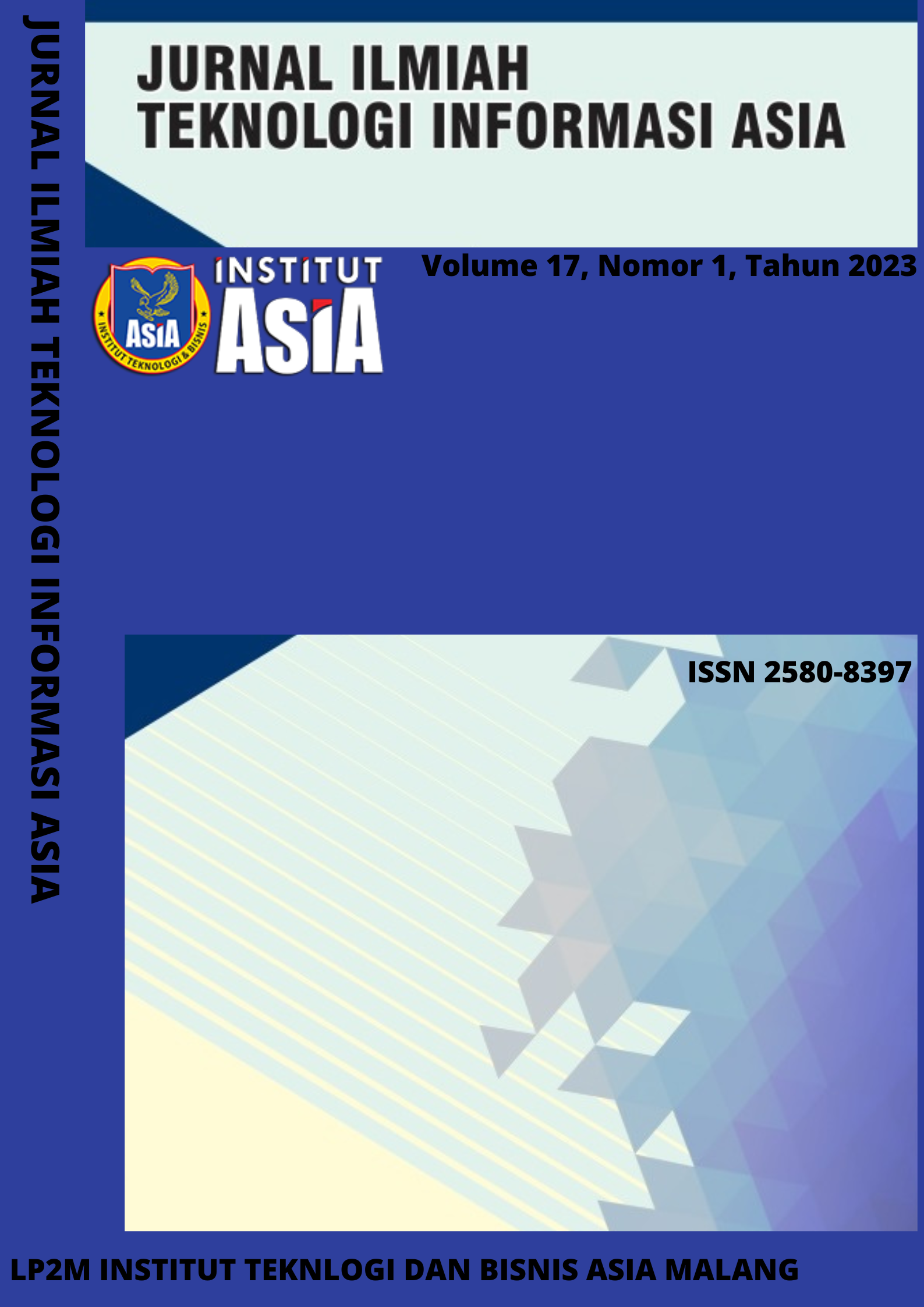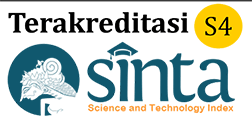Clustering Wilayah Kerawanan Stunting Menggunakan Metode Fuzzy Subtractive Clustering
DOI:
https://doi.org/10.32815/jitika.v17i1.877Keywords:
Stunting, Clustering, Fuzzy Subtractive ClusteringAbstract
Stunting is a chronic lack of nutrition experienced by toddlers, causing the body to be too short for its age. In Bulungan Regency, stunting is a problem that the government focuses on handling. Based on these problems, this study aims to determine the clusters of stunting susceptibility levels. The method used is Fuzzy Subtractive Clustering (FSC). The method stages in this research are data collection; clustering process using the FSC method; the process of determining the candidate cluster center; the cluster center consideration process using various parameters; then clustering the previously given data into the appropriate cluster based on the degree of membership of each. From this study it can be concluded that the radius (r) of 0.92 produces the best number of clusters. The number of clusters formed is 7 clusters as follows, cluster 1 has 2 sub-districts, cluster 2 has 3 sub-districts, cluster 3 has 3 sub-districts, cluster 4 has 1 sub-district, cluster 5 has 1 sub-district, cluster 6 has 1 sub-district, and cluster 7 has 1 district.
Keywords: Stunting; Clustering ; Fuzzy Subtractive Clustering (FSC)
Downloads
References
2. Ni’mah K, Nadhiroh SR. Faktor yang berhubungan dengan kejadian stunting pada balita. Media Gizi Indonesia. 2015;10(1):13–9.
3. Budiastutik I, Nugraheni SA. Determinant of stunting in indonesia: a review article. Indonesian Journal of Healthcare Research. 2018;1(2):43–9.
4. Mulyaningsih T, Mohanty I, Widyaningsih V, Gebremedhin TA, Miranti R, Wiyono VH. Beyond personal factors: Multilevel determinants of childhood stunting in Indonesia. PLOS ONE. 2021 Nov 19;16(11):e0260265.
5. Ahmed M, Seraj R, Islam SMS. The k-means Algorithm: A Comprehensive Survey and Performance Evaluation. Electronics. 2020 Aug;9(8):1295.
6. Nagari SS, Inayati L. IMPLEMENTATION OF CLUSTERING USING K-MEANS METHOD TO DETERMINE NUTRITIONAL STATUS. Jurnal Biometrika dan Kependudukan. 2020 Jun 15;9(1):62–8.
7. Safitri D, Rahmawati R, Hitasari OK. Fuzzy subtractive clustering berdasarkan kejadian bencana alam pada kabupaten/kota di jawa tengah. Jurnal Statistika Universitas Muhammadiyah Semarang [Internet]. 2017 [cited 2022 Feb 13];5(2). Available from: https://jurnal.unimus.ac.id/index.php/statistik/article/view/3190
8. Haryati AE, Surono S. Comparative study of distance measures on fuzzy subtractive clustering. MEDIA STATISTIKA. 2022 Jan 11;14(2):137–45.
9. Haryati AE, Surono S, Suparman S. Implementation of minkowski-chebyshev distance in fuzzy subtractive clustering. EKSAKTA: Journal of Sciences and Data Analysis. 2021 Jun 23;2(2):82–7.
10. Setare, M. R. and Sajadi, S. N. Clustering with Principal Component Analysis and Fuzzy Subtractive Clustering Using Membership Function Exponential and Hamming Distance. The 5th International Conference on Information Technology and Digital Applications (ICITDA). 2020 Mar 17: 2(2):17–57
11. Alashwal H, El Halaby M, Crouse JJ, Abdalla A, Moustafa AA. The Application of Unsupervised Clustering Methods to Alzheimer’s Disease. Frontiers in Computational Neuroscience [Internet]. 2019 [cited 2022 Jun 23];13. Available from: https://www.frontiersin.org/article/10.3389/fncom.2019.00031.
12. Hayati, M. N., Goejantoro, R., et al. Penerapan metode subtractive fuzzy c-means pada tingkat partisipasi pendidikan jenjang sekolah menengah atas/sederajat di kabupaten/kota pulau kalimantan tahun 2018. Journal of Statistics and Its Applications.2020 Des:2(2):63–74.
13. Efendi M. Penerapan metode k-means clustering pada sistem pendukung keputusan penentuan status gizi batita. JATI (Jurnal Mahasiswa Teknik Informatika). 2018 Sep 3;2(2):184–9.
14. Mahmudi A, Nataly S, Kusyanti DE. Pengelompokan pekerjaan pembenahan jaringan irigasi tersier di kabupaten malang menggunakan metode k-means clustering. Sinteks : Jurnal Teknik. 2018 Jul 9;7(1):9–15.
15. Liu Y, Zhang Y, Chao H. Incremental fuzzy clustering based on feature reduction. Journal of Electrical and Computer Engineering [Internet]. 2022 Mar 28 [cited 2022 Jun 23];2022:e8566253. Available from: https://www.hindawi.com/journals/jece/2022/8566253/.
16. Zolghadr A, Jalalian A. A fuzzy clustering based method for the spatio-temporal data analysis. Journal of Computer Science [Internet]. 2022 Jun 13 [cited 2022 Jun 23];18(6):480–95. Available from: https://thescipub.com/abstract/jcssp.2022.480.495.
17. Fitri, N. A., Hayati, M. N., and Goejantoro, R. Grouping Districts/Cities in Kalimantan Island Based on The People’s Welfare Indicators Using Fuzzy C-Means and Subtractive Fuzzy C-Means Methods. Jurnal Matematika, Statistika dan Komputasi. 2021 Sep:18(1):141–149.
18. Azizah N, Yuniarti D, Goejantoro R. Penerapan metode fuzzy subtractive clustering. EKSPONENSIAL. 2019 Jan 22;9(2):197–206.
19. Kusumadewi, S & Purnomo, H. Aplikasi Logika Fuzzy untuk Pendukung Keputusan Edisi 2. Yogyakarta: Graha Ilmu. 2013.
20. Cahyaningrum, P. L. S. (2019). Indonesian community welfare levels clustering using the fuzzy subtractive clustering ( FCM ) method. Journal of Physics . 2019Jan 21-22: 4(8).
Additional Files
Published
How to Cite
Issue
Section
License
Upon acceptance for publication, authors transfer copyright of their article to Jurnal Ilmiah Teknologi Informasi Asia. This includes the rights to reproduce, transmit, and translate the material in any form or medium.
While the editorial board endeavors to ensure accuracy, they accept no responsibility for the content of articles or advertisements. Liability rests solely with the respective authors and advertisers.
Website material is licensed under a Creative Commons Attribution 4.0 International License (CC BY 4.0). Under this license, users are free to share and adapt the material for any purpose, including commercial use, provided license terms are met. These freedoms are irrevocable by the licensor under such conditions.














